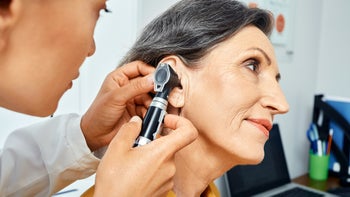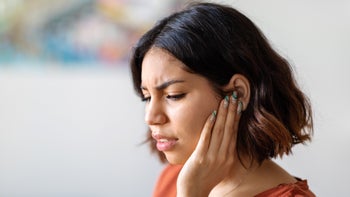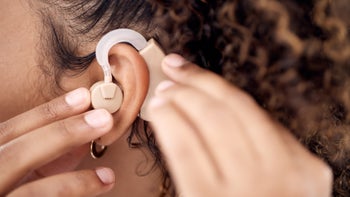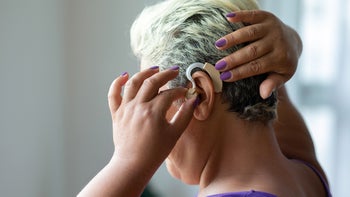
Breaking Down Swimmer’s Ear: What It Is, What Causes It, and How to Treat It
Key takeaways:
Swimmer’s ear is a bacterial infection of the outer part of the ear that can lead to pain, redness, and difficulty hearing.
You can help decrease your chances of getting swimmer’s ear by fully drying out your ears after they get wet and avoiding placing objects in your ears (including Q-tips).
Swimmer’s ear is best treated with topical ear drops rather than oral antibiotics.
Access savings on related medications
Table of contents
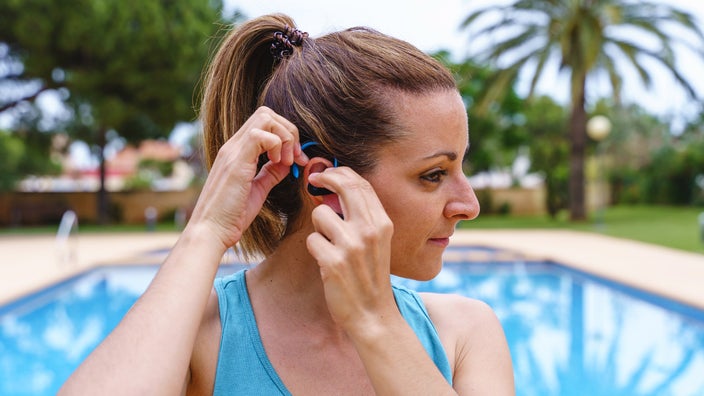
Swimming can be tons of fun, and it’s great exercise, too. But, for some people, it comes with an added risk: pain and redness of the ear, a condition known as swimmer’s ear. About 10% of people will experience swimmer’s ear at some point in their lives. Knowing how to prevent and treat this condition can help you enjoy the water without prolonged ear pain.
What is swimmer’s ear?
Swimmer’s ear (acute otitis externa) is an infection of the ear canal. The ear canal is the area from the outside opening of the ear to the eardrum. When that area develops inflammation and infection, it’s called swimmer’s ear.

What causes swimmer’s ear?
Swimmer’s ear is usually caused by bacteria that grow in the ear canal. Anything that causes water to remain in the ear canal makes it more likely that bacteria will grow. Swimming or spending time in a water-based play area (like a pool or waterpark) is one of the most-common triggers, hence the name. However, swimming isn’t the only way to get it.
Save over 40% on Qsymia with GoodRx
Discover the once daily Qsymia for weight management. Qsymia is for adults and children 12-17 in combination with a healthy diet and regular exercise.

Swimmer’s ear is more likely to develop in humid environments and in people who:
Have narrow ear canals
Use hearing aids
Scratch inside their ears or use Q-tips
Have chronic dry skin, such as eczema or psoriasis
What are the symptoms of swimmer’s ear?
Swimmer’s ear can appear in a variety of ways. Common symptoms include:
Pain (especially when tugging on the earlobe or pushing on the ear)
Redness
Itching
Dry, scaly skin in the ear canal
Drainage of clear fluid
Redness or swelling of the outer ear
Muffled or decreased hearing
Best ear infection treatments: Check out our list of the best antibiotics for ear infections, so you can get fast relief.
Adult ear infections: It’s not just an issue for kids. Find out what to do if you’re an adult with an ear infection.
Ear infection medications: Learn more about the best over-the-counter treatment options for ear infections.
What’s the difference between swimmer’s ear and a regular ear infection?
A swimmer’s ear infection involves the outer part of the ear (the ear canal). A typical ear infection refers to inflammation that occurs more internally, just behind the eardrum in the middle ear. Both types of ear infection involve ear pain. However, here are some common ways in which they’re different.
Middle ear infection
A middle ear infection is more likely to:
Be triggered by a viral upper respiratory infection or a cold
Be accompanied by a fever
Cause pain that worsens when lying down
Need oral antibiotics to get better
Happen in younger children
Read more like this
Explore these related articles, suggested for readers like you.
External ear infection (swimmer’s ear)
An external ear infection is more likely to:
Be associated with pain when pulling on the outside part of the ear
Have ear discharge
Happen after swimming
Have visible redness and swelling to the outside part of the ear
Get better without oral antibiotics
Common swimmer’s ear treatments
Fortunately, there is a cure for swimmer’s ear. It’s not recommended to use oral antibiotics for treating a simple swimmer’s ear infection. Instead, treatments with ear drops applied directly to the ear canal seem to be more effective at getting rid of swimmer’s ear — and lead to fewer side effects. Here are common ways of treating swimmer’s ear.
Ear drops
Ear drops with the following ingredients can be used for swimmer’s ear:
Antibiotics: ofloxacin (Floxin)
Antibiotics plus steroids: ciprofloxacin / dexamethasone (Ciproxex) or colistin / hydrocortisone / neomycin / thonzonium (Cortisporin)
Sterilizing ingredient: acetic acid
Medications
Over-the-counter (OTC) pain medications: acetaminophen or ibuprofen
Oral antibiotics: If you have an underlying condition that makes you more prone to serious infections, a healthcare professional may prescribe oral antibiotics to prevent a more severe infection from developing.
Other tips
Keep the area dry during treatment. You should avoid swimming for 7 to 10 days while you’re being treated for swimmer’s ear.
What types of water activities or swimming make you more prone to getting swimmer’s ear?
There are certain activities that may make it more likely for you to get swimmer’s ear. These activities include:
Swimming in freshwater lakes: This is often due to the presence of a bacteria called P. aeruginosa that can be present in freshwater lakes.
Swimming in unclean pools: Improperly treated pools can allow bacteria to develop, leading to increased risk for infection.
Water sports: Anything that involves more time spent in the water, like water sports (such as water polo or competitive swimming), can lead to swimmer’s ear.
How can you prevent swimmer’s ear?
There’s no guaranteed way to prevent external ear infections. However, here are some tips to help decrease your chances of developing one:
Wear a bathing cap or ear plugs when swimming.
Dry your ears well after swimming or showering.
Don’t try to remove ear wax — ear wax helps prevent bacteria from growing.
Don’t put objects in your ears (including cotton swabs or your fingers).
Make sure your pool has been appropriately treated to prevent bacterial overgrowth.
Avoid swimming in freshwater lakes, if you’re prone to swimmer’s ear.
If you’re prone to swimmer’s ear, it may help to dry out the ears after swimming or showering using OTC rubbing alcohol (70% isopropyl alcohol) or a homemade remedy. But talk to a healthcare professional first and make sure ear drops are safe for you to use.
To make the homemade remedy:
Mix equal parts rubbing alcohol and vinegar.
Use an eyedropper to place about 5 mL in your ear.
Let it drain out.
Can you get swimmer’s ear from taking a shower or a bath?
It’s rare for showering or taking a bath to lead to swimmer’s ear in most people. But anything that creates moisture in the ear canal can cause swimmer’s ear. So, it’s possible. If you often aggressively remove ear wax or have eczema that irritates the skin on your outer ear canal, you may be more prone to developing swimmer’s ear from regular daily activities.
Can swimmer’s ear go away on its own?
Sometimes swimmer’s ear can resolve on its own. But it can take weeks to do so. And it can occasionally lead to long-term scarring and hearing loss. In rare cases, it can lead to a severe infection of the surrounding bones, called necrotizing otitis externa. This mostly occurs in people with a weakened immune system or older people with diabetes.
If you think you might have swimmer’s ear, you should contact a healthcare professional for treatment.
The bottom line
Swimmer’s ear is a common and treatable infection of the external canal of the ear. You can decrease your chances of developing it by keeping your ear dry, avoiding activities that irritate the skin lining the ear canal, and avoiding pools or lakes, which are more likely to be contaminated by bacteria. If you get diagnosed with swimmer’s ear, a variety of ear drops may be used for treatment.
Why trust our experts?


References
Centers for Disease Control and Prevention. (2024). Preventing swimmer’s ear.
Fick, D. (2017). Otitis externa: Get rid of swimmer's ear. University of Iowa Hospitals and Clinics.
Hajioff, D., et al. (2015). Otitis externa. British Medical Journal Clinical Evidence.
Handzel, O., et al. (2003). Necrotizing (malignant) external otitis. American Family Physician.
Harmes, K. M., et al. (2013). Otitis media: Diagnosis and treatment. American Family Physician.
Kaushik, V., et al. (2010). Interventions for acute otitis externa. The Cochrane Database of Systematic Reviews.
Kujundzić, M., et al. (2012). Water-related otitis externa. Collegium Antropologicum.
Rosenfeld, R. M., et al. (2014). Clinical practice guideline: Acute otitis externa (update). American Academy of Otolaryngology—Head and Neck Surgery.
Schaefer, P., et al. (2012). Acute otitis externa: An update. American Family Physician.
van Asperen, I. A., et al. (1995). Risk of otitis externa after swimming in recreational freshwater lakes containing pseudomonas aeruginosa. British Medical Journal.
Wiegand, S., et al. (2019). Otitis externa. Deutsches Ärzteblatt International.


















